A wattle hurdle was once a common piece of equipment in a pre-industrial agrarian setting. The original purpose has now been made mostly obsolete by industrial fencing materials. However, the hurdle has potential to find a place again in the modern garden.
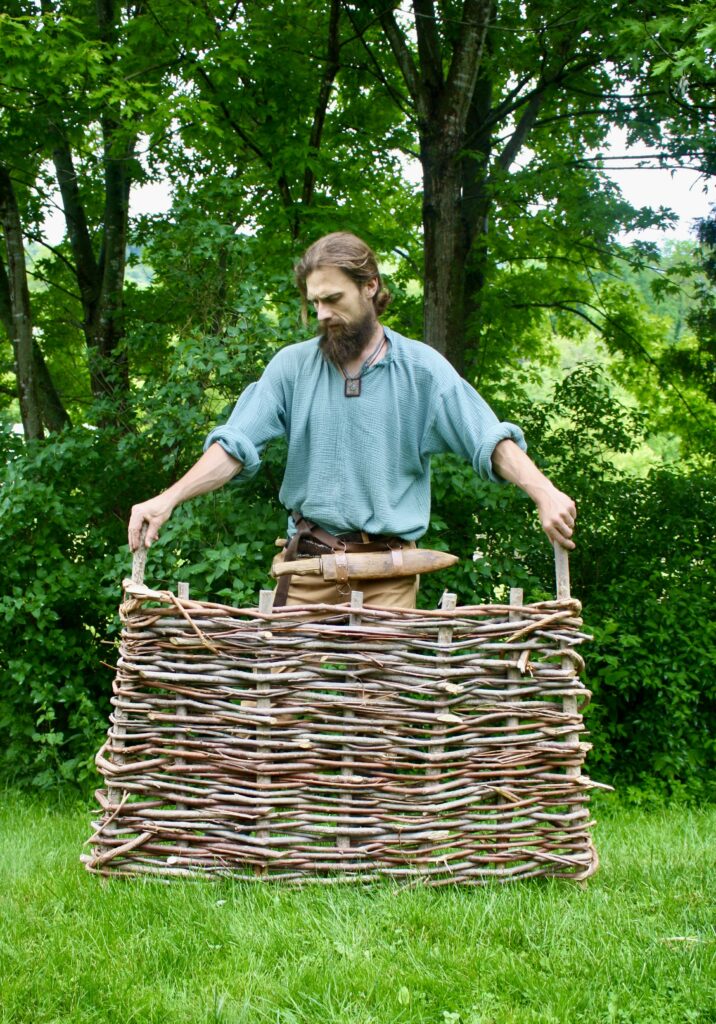
The History of Hurdles
What is a wattle hurdle? They are simply moveable fence panels. Shepherds in Europe, used them right into the 20th century. Hurdles were light-weight and could be carried over the shoulder. One could assemble a quick sheep pen using four of them. Through the centuries, this craft continued especially in England. Willow or hazel were the common material for the job, but hazel lasts longer. Hurdle-making was a proper wood-craft that took acquired skill to master. Below is an example just to give you an idea. Of course, there is special terminology for this craft. The upright posts of a hurdle were known as zales.
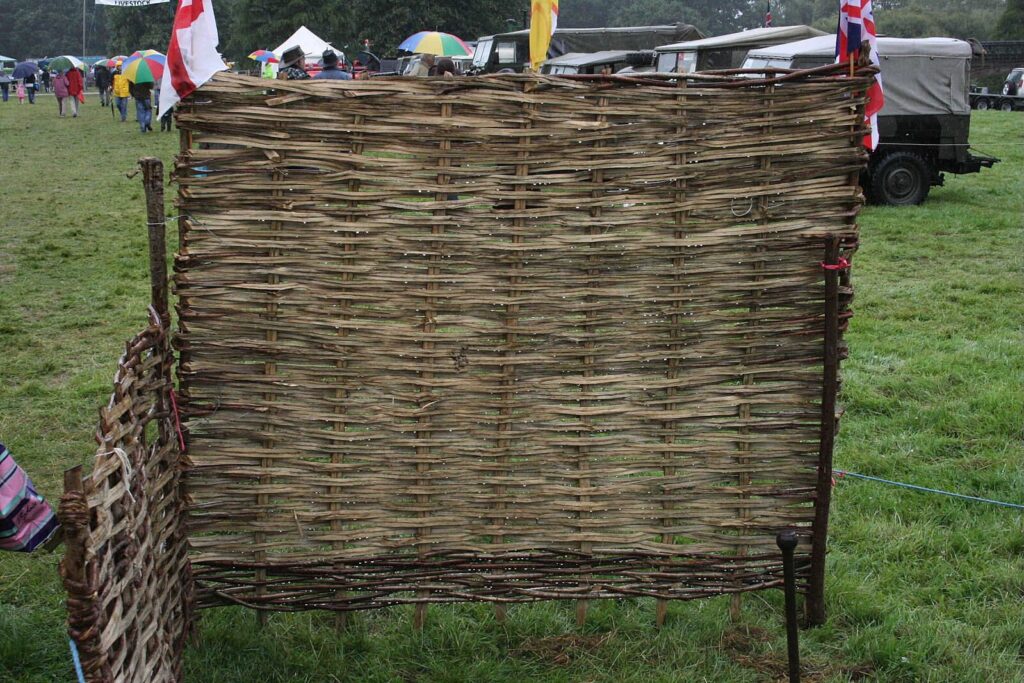
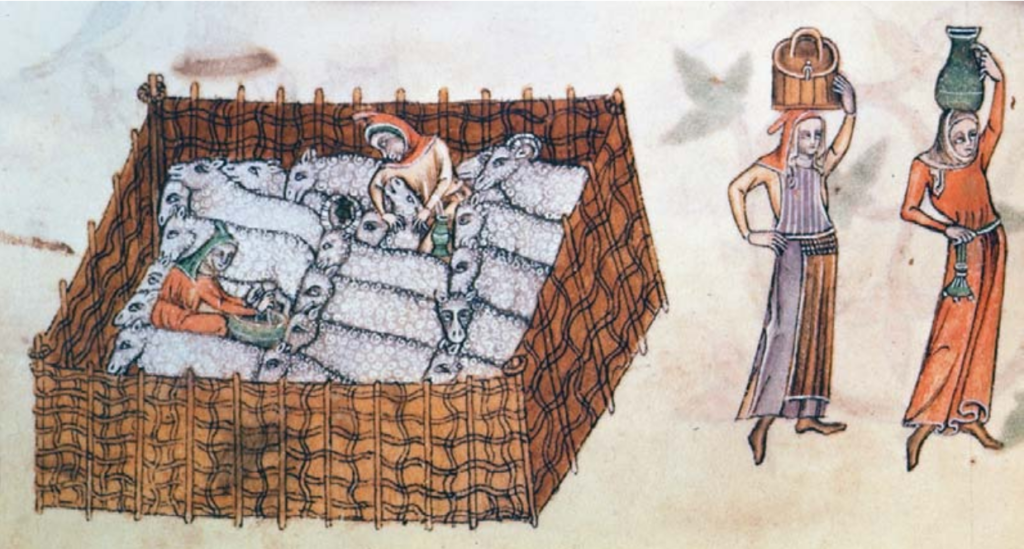
An Ancient Look to Improve the Modern Aesthetic
What use are wattle hurdles to the modern homesteader? Consider these points:
- Keeping heritage alive: As with most of my projects, there is value in itself in the re-discovery of nearly forgotten crafts. Equally valuable is the opportunity to re-learn how to work with natural materials. For myself, it is a wonderful way to beautify life in the 21st century.
- Use them for them for their original purpose: If you have the time and material, why not try them out with small livestock, like sheep? That is, if you also have sheep..
- Garden aesthetic: The wattle appearance, once so mundanely common, now has a beautiful appeal nowadays.
On that last point, you can use a hurdle to:
- Hide something like a gas meter.
- Use as a backdrop for flowers and perennials
- provide a trellis for climbing plants like a clematis, morning glories or even beans, gourds and cucumbers.
My Own Wattle Hurdle
Obviously, I had no master to teach me. Therefore, I consulted some fantastic books such as Traditional Woodland Crafts by Raymond Tabor. After a bunch of reading and day-dreaming, there is nothing left but to try it out for myself!
Typically, the English wattle hurdle had nine zales/posts. For my first hurdle, I had seven. My two pieces of equipment were my bush-knife and the form (pictured below). The form is simply a heavy log or beam with seven large holes bored in the top. These holes will hold the zales in place as you weave the withes.
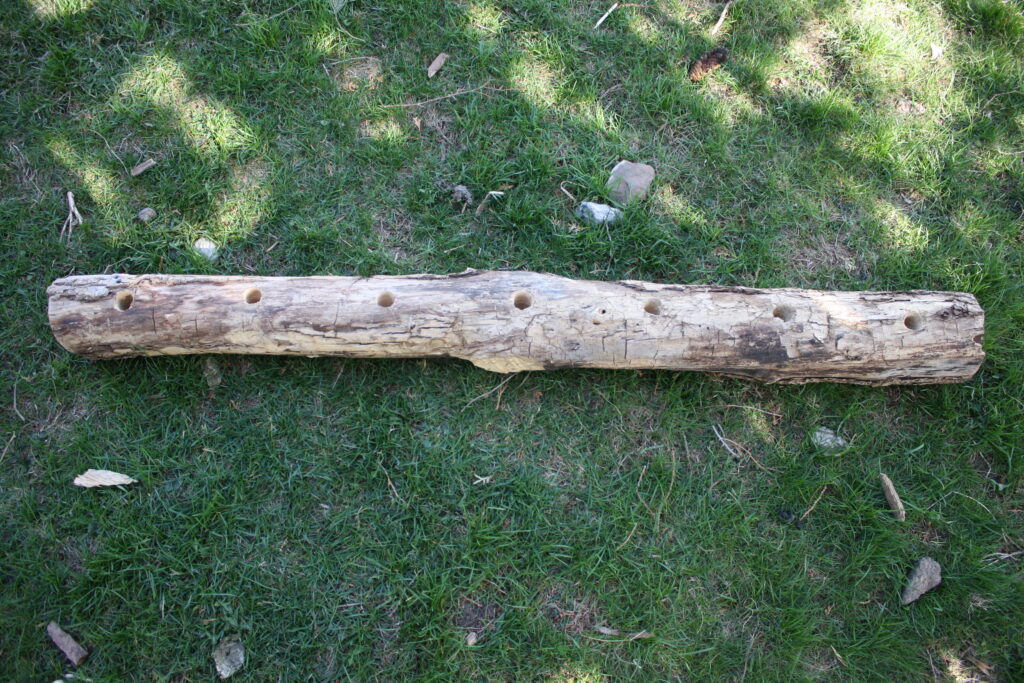
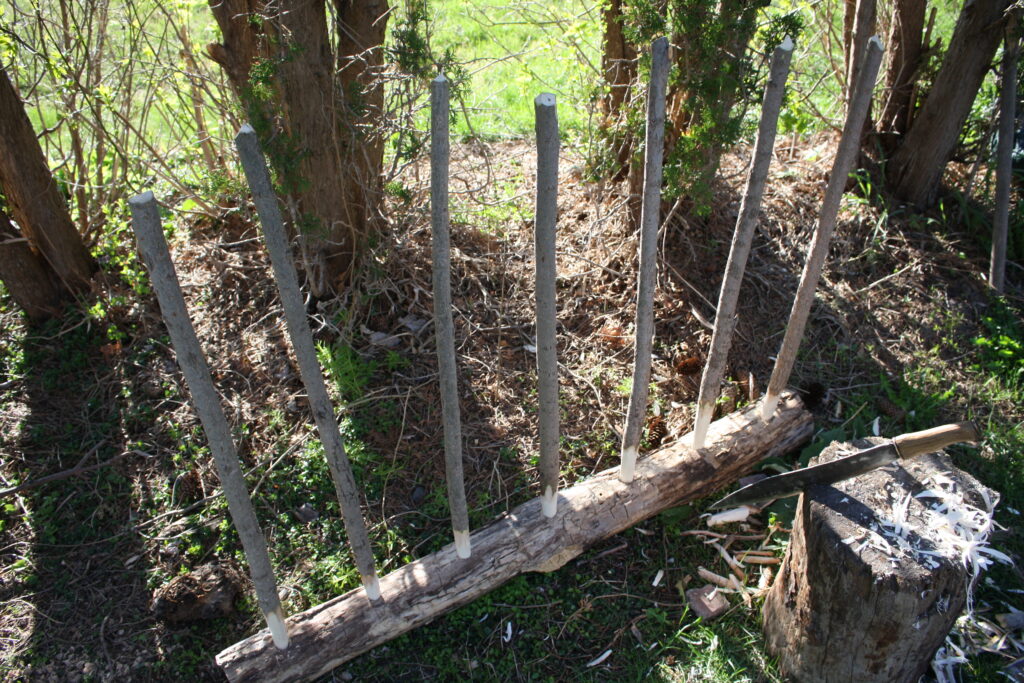
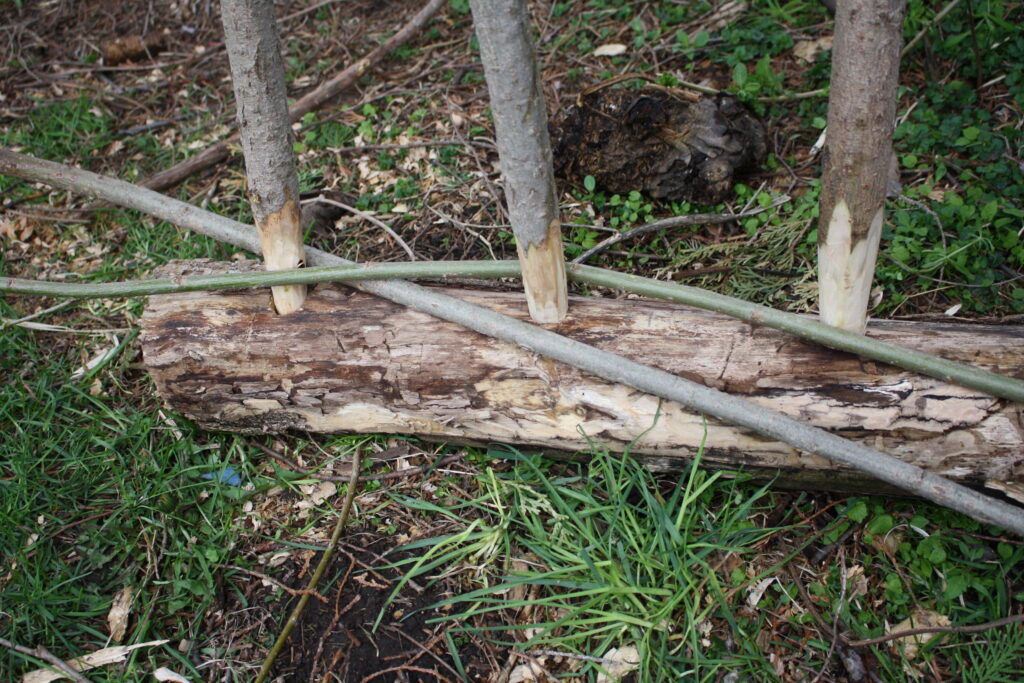
Below, I started weaving the first withes on the zales. As you can see on the left, the children already helped themselves to my pile of withes to weave a fence of their own.
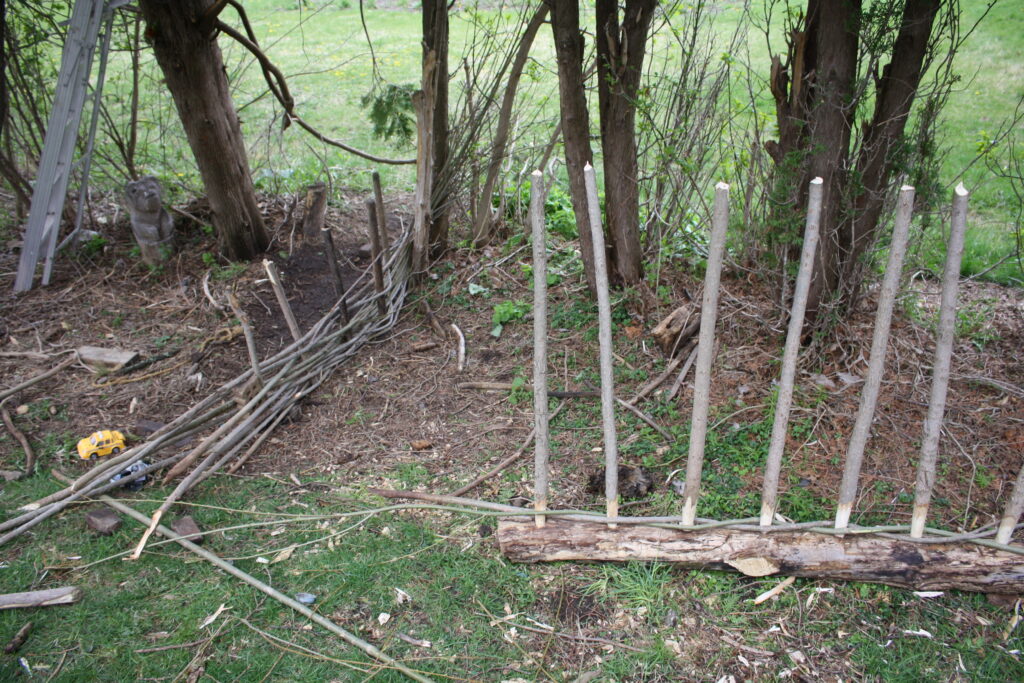
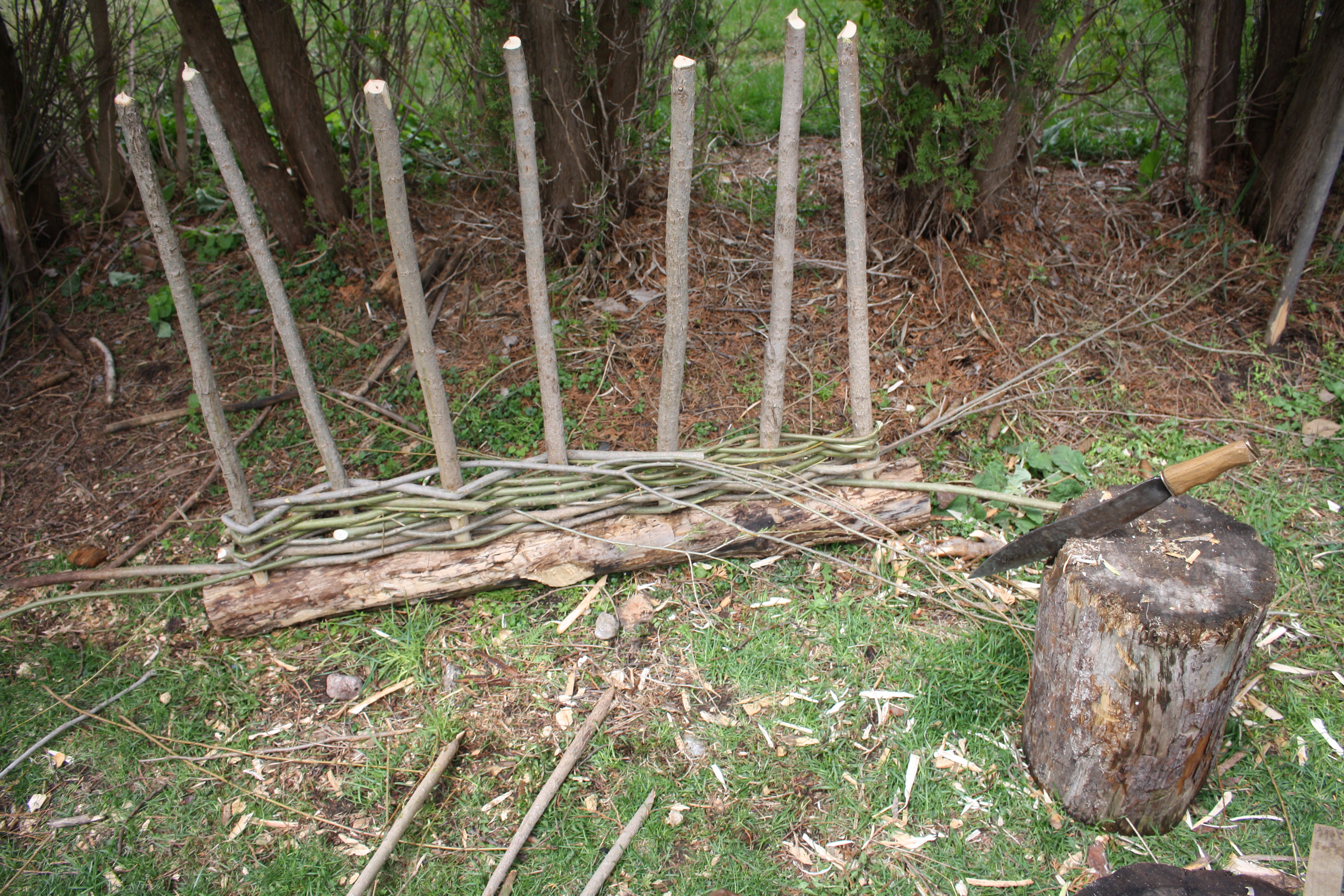
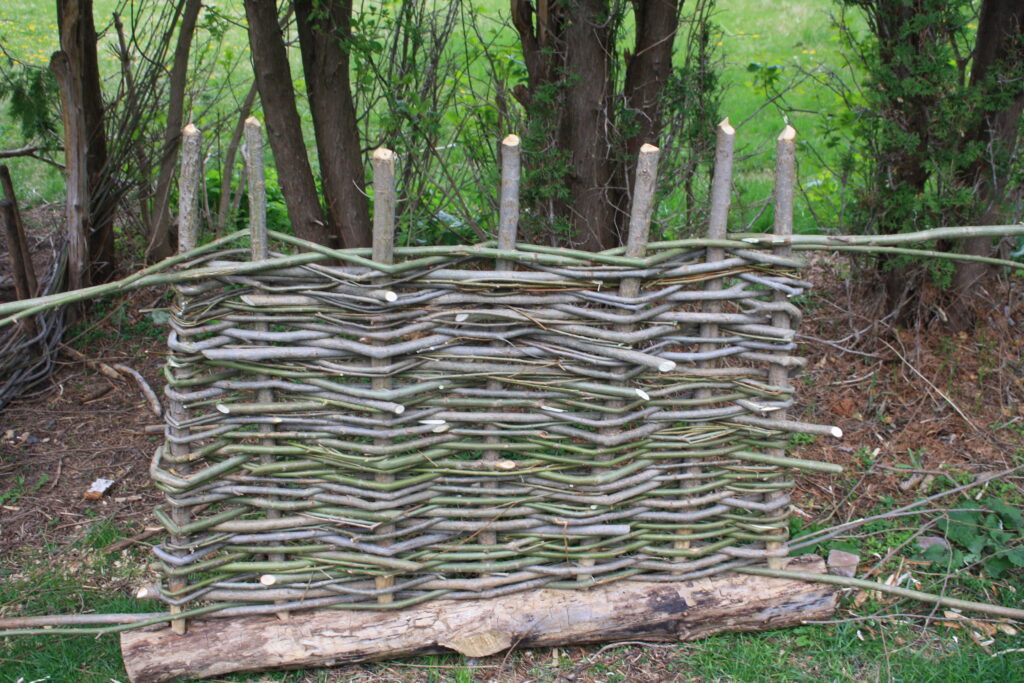
I left the very bottom and very top withes long on both sides. At the end of the project, you twist and tuck these loose ends into the weave (as pictured below). This is so the hurdle holds tightly together.
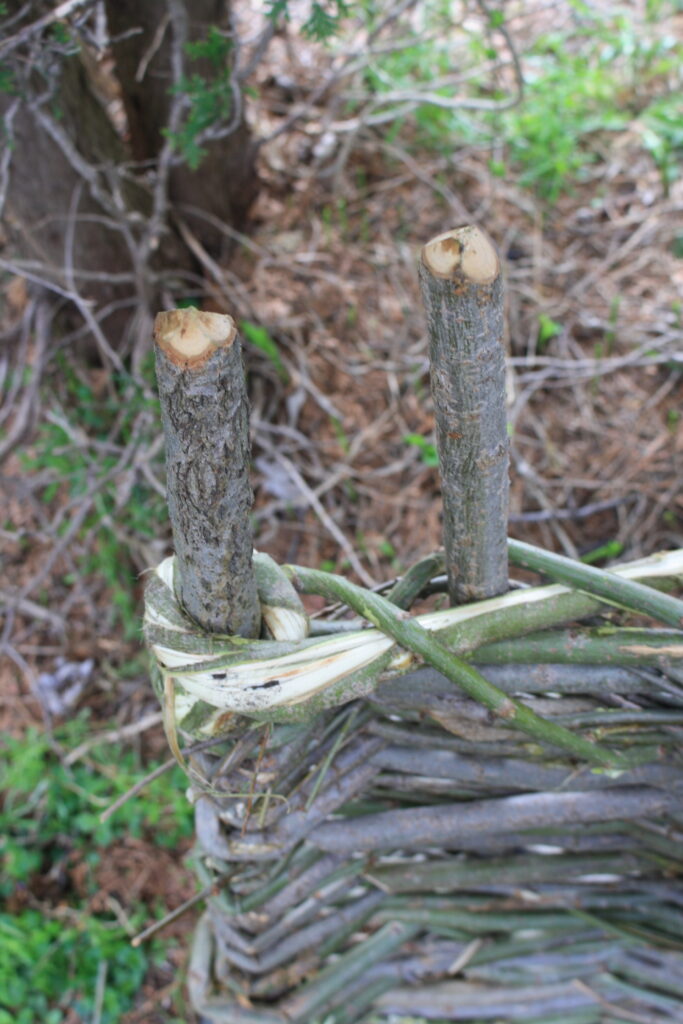
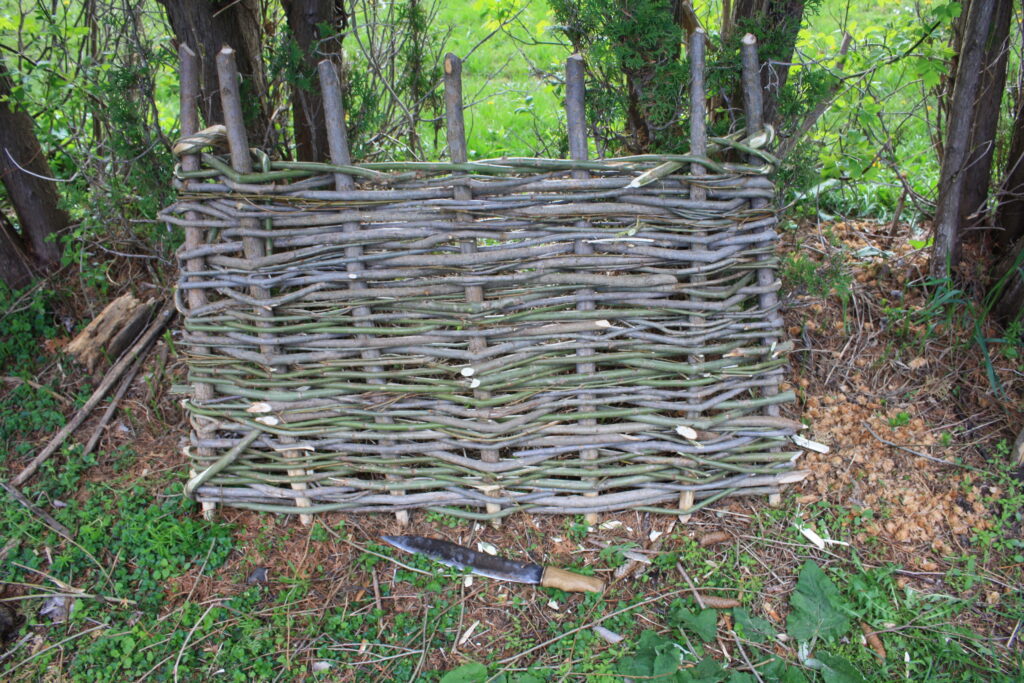
Making your Wattle Hurdle last
First of all, if you can to source straight hazel withes, they will last longer. Myself, I have willow, so that is what I use.
Lastly, a hurdle is moveable. So at the end of the growing season, store it undercover.
One of many projects
Coppicing provides a host of wood-crafts. Check out some of my growing list of projects that my little willow coppice has provided me:
~ Nathanael


Leave a Reply